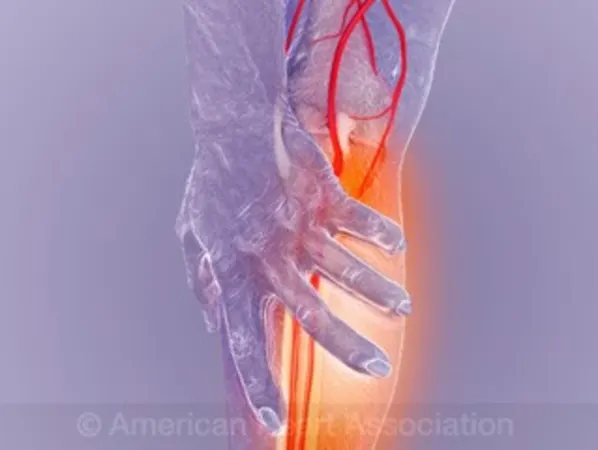
Peripheral Artery Disease (PAD)
Peripheral artery disease (also called PAD) is a common circulatory problem in which narrowed arteries reduce blood flow to your limbs. When you develop peripheral artery disease (PAD), your extremities — usually your legs — don’t receive enough blood flow to keep up with demand. This causes symptoms, most notably leg pain when walking (claudication). Peripheral artery disease is also likely to be a sign of a more widespread accumulation of fatty deposits in your arteries (atherosclerosis). This condition may be reducing blood flow to your heart and brain, as well as your legs. You often can successfully treat peripheral artery disease by quitting tobacco, exercising and eating a healthy diet.
While many people with peripheral artery disease have mild or no symptoms, some people have leg pain when walking (claudication). Claudication symptoms include muscle pain or cramping in your legs or arms that’s triggered by activity, such as walking, but disappears after a few minutes of rest. The location of the pain depends on the location of the clogged or narrowed artery. Calf pain is the most common location. The severity of claudication varies widely, from mild discomfort to debilitating pain. Severe claudication can make it hard for you to walk or do other types of physical activity.
If you have leg pain, numbness or other symptoms, don’t dismiss them as a normal part of aging. Call your doctor and make an appointment. Even if you don’t have symptoms of peripheral artery disease, you may need to be screened if you are:
Peripheral artery disease is often caused by atherosclerosis. In atherosclerosis, fatty deposits (plaques) build up in your artery walls and reduce blood flow. Although the heart is usually the focus of the discussion of atherosclerosis, this disease can and usually does affect arteries throughout your body. When it occurs in the arteries supplying blood to your limbs, it causes peripheral artery disease. Less commonly, the cause of peripheral artery disease may be blood vessel inflammation, injury to your limbs, unusual anatomy of your ligaments or muscles, or radiation exposure.
Factors that increase your risk of developing peripheral artery disease include:
Patient resources
© 2025 Vascular Solutions. All rights reserved
Made with ❤️ by Decole Technologies